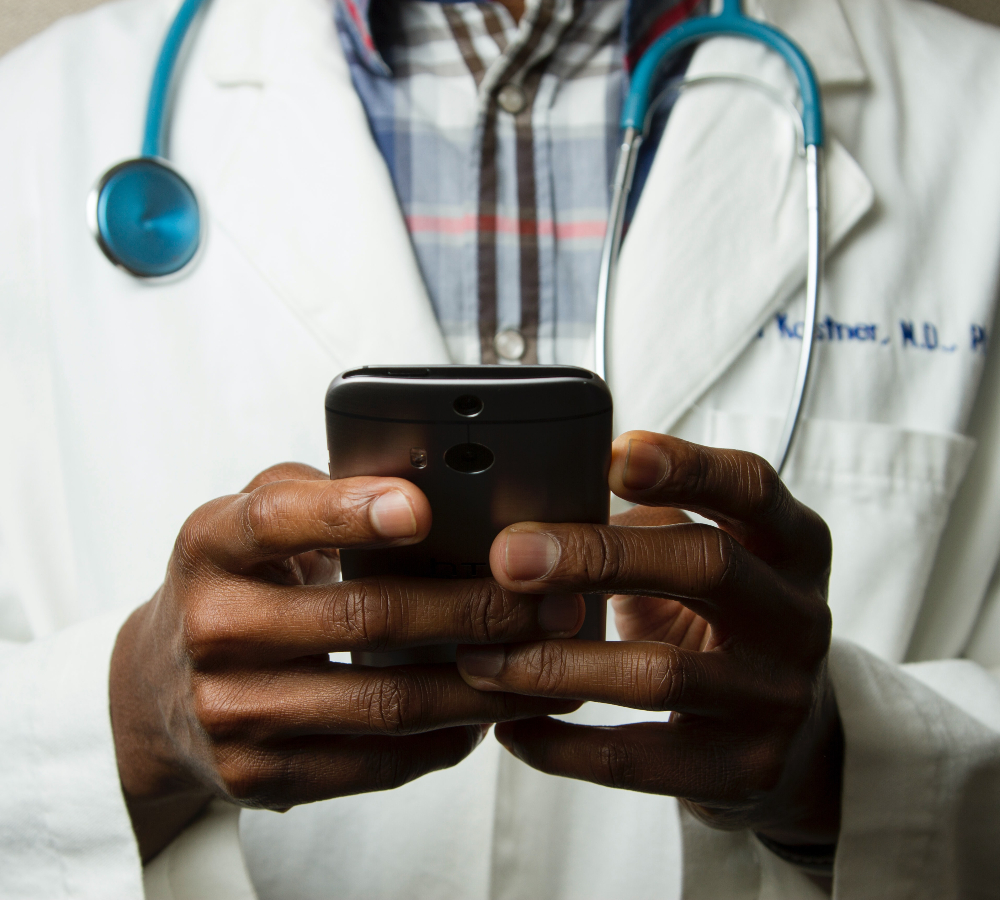With the spread of COVID-19, medical practices across the US have had to implement new social-distancing procedures, like virtual waiting rooms, to protect the health of their patients and staff.
What is a Virtual Waiting Room?
A virtual waiting room is a modern alternative to the traditional waiting area, allowing patients to check in for appointments and wait remotely—typically from their car or home—rather than gathering in a shared space. This approach first gained popularity during the COVID-19 pandemic as a way to reduce in-office exposure, but it has since evolved into a patient experience feature that promotes convenience, privacy, and efficient communication.
In a virtual waiting room model, patients notify the office upon arrival (often via secure text), and wait in a nearby location until the provider is ready. Staff then send a message inviting the patient to come inside when it’s time to be seen. The entire process eliminates the need to sit in crowded waiting areas, improves patient flow, and allows for more personalized, real-time updates.
Virtual waiting rooms can also include additional digital touchpoints such as:
- Mobile check-in
- Secure intake form submission
- Automated appointment reminders
- Pre-visit instructions or consent forms
With platforms like OhMD, virtual waiting rooms are powered by HIPAA-compliant two-way texting, making it easy for both patients and staff to stay connected without downloading an app or logging into a portal.
How Virtual Waiting Rooms Work
Virtual waiting rooms typically follow a simple, technology-enabled workflow:
- Pre-visit communication: Before the appointment, patients receive a text reminder with instructions to remain in their car or outside the building when they arrive.
- Arrival notification: Upon arrival, the patient replies to the text or sends a new message saying they’re here. This check-in replaces the need to enter the office.
- Secure messaging: Front desk staff receive the message via a HIPAA-compliant platform like OhMD and reply in real time to confirm receipt and give next steps.
- Digital intake: If needed, the patient receives a link to complete forms or verify insurance info before entering the building.
- Real-time updates: Staff text when it’s time for the patient to come in—just like a restaurant notifying you when your table is ready. If a delay occurs, staff can instantly update the patient via text.
- Optional post-visit communication: The same messaging thread can be used to share follow-up instructions, gather feedback, or request reviews.
This system works seamlessly for both in-person and hybrid visits, offering flexibility and clarity for every type of appointment.
Benefits of Virtual Waiting Rooms
Virtual waiting rooms offer major advantages for patients, providers, and front desk staff alike. Key benefits include:
1. Enhanced safety
By reducing the number of people inside the office at any given time, virtual waiting rooms help limit exposure to illness—especially for vulnerable populations or immunocompromised patients.
2. Better time management
Instead of being left in the dark about wait times, patients receive real-time updates. This allows them to wait comfortably and plan their day more effectively. Providers and staff also gain better control of patient flow.
3. Higher patient satisfaction
Patients appreciate not having to sit in a crowded waiting room filling out paper forms. The convenience of checking in via text, completing forms on their phone, and receiving timely updates leads to a more personalized, modern experience.
4. Increased efficiency
Virtual waiting rooms reduce phone call volume, walk-in congestion, and manual paperwork. Staff can focus more on delivering quality service rather than juggling clipboards and crowded lobbies.
5. Improved privacy
Instead of stating personal information aloud at the front desk, patients can share sensitive details securely via encrypted messaging. This fosters a more private and respectful check-in process.
6. Cost savings
Practices save on printing costs, filing resources, and labor-intensive admin tasks. Digital workflows reduce the need for paper forms and filing cabinets—and speed up documentation.
7. Scalability and flexibility
Virtual waiting rooms are ideal for solo practices, multi-location groups, and specialty clinics alike. They can be adapted to fit walk-in visits, scheduled appointments, telehealth check-ins, and more.
Increasing Demand for HIPAA Compliant Messaging Platforms
With an increasing demand for socially distant check-in procedures comes an increasing demand for HIPAA compliant telehealth platforms through which patients and providers can communicate securely. OhMD offers the most efficient form of communication for this purpose: two-way SMS texting. Patients can use OhMD to text their doctor’s office from a virtual waiting room and get a text right back with their appointment status.
Goodbye Paper Forms
When practices stop using physical waiting rooms and paper forms due to safety concerns, the already low 9% healthcare form conversion rate could get even worse. OhMD has a solution. With OhMD Forms, practices can text electronic forms directly to their patients. Patients fill out the forms on their phone from the comfort of their home or car before their appointment.
This saves the practice time since they no longer have to file paper forms or wait for patients to fill them out at the office. It also saves money, as the average healthcare organization spends $20 per paper document filed. Electronic forms eliminate this cost and frivolous paper filing altogether.

Are Virtual Waiting Rooms The New Normal?
Although the demand for virtual waiting rooms spiked out of necessity, they may be the new normal as patients and providers get accustomed to a heightened level of communication and efficiency.
Providers and their staff who use HIPAA compliant messaging benefit from more instantaneous communication with patients and, therefore, a stronger patient-provider relationship. The ability to text patients to make sure they will be at their appointment or to let them know their doc is running a few minutes behind, promises less time wasted for both patient and provider.
With virtual waiting rooms, patients benefit not only from social-distancing precautions, but from a heightened level of privacy. Rather than confirming PHI out loud to administrative staff in a crowded waiting room, they can communicate through a secure messaging platform. Since they have access to live updates by text, patients have a better sense of when they will be admitted than with traditional waiting rooms.
The Waiting Room of the Future
Like text notifications from a restaurant when a table is ready, or from a pharmacy when a prescription is filled, virtual waiting rooms satisfy an ever-growing desire for live status updates in the healthcare realm. In a world that relies on status automation to keep our impatience at bay, virtual waiting rooms, coupled with two-way patient texting, are here to stay.



